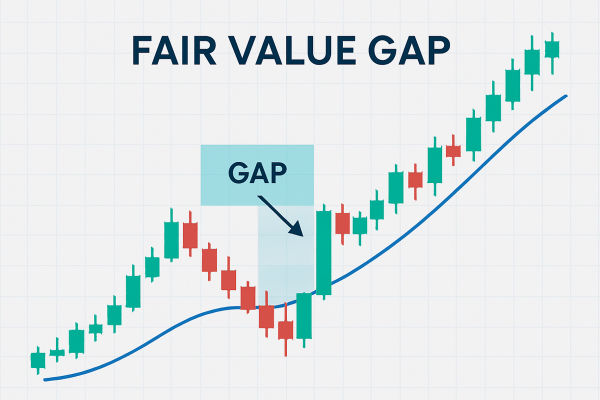Have you ever wondered how people make money by trading US stocks? Perhaps you've heard stories of traders turning small sums into fortunes, or maybe you're simply curious about how the stock market works. Trading US stocks might seem like a complex world reserved for financial experts, but the truth is, anyone can learn the basics and get started. Whether you're looking to grow your wealth, explore a new skill, or simply understand how the market operates, this guide will walk you through everything you need to know as a beginner.
What You Need to Know Before You Start Trading
To begin with, it's important to understand the structure of the US stock market. It might seem complex at first, but in fact, it's just a system designed to make buying and selling shares as efficient as possible.
There are two main stock exchanges in the United States that you'll likely encounter as a beginner: the New York Stock Exchange (NYSE) and NASDAQ.
NYSE: This is the world's largest stock exchange by market capitalisation, home to some of the oldest and most well-established companies. It's the place where household names like Coca-Cola, McDonald's, and IBM are traded.

NASDAQ: While smaller than the NYSE in terms of listed companies, NASDAQ is the go-to place for high-growth companies, particularly in the tech sector. Think Apple, Amazon, and Tesla – all of them are listed on NASDAQ.

Now, when you buy or sell stocks, you're not interacting with a physical person at an exchange. Instead, you're trading through a system of market participants. The key players here are retail traders (like you), institutional traders (think large mutual funds and pension funds), and market makers (the ones who ensure there's always a buyer or seller to match your orders).
As a beginner, your focus will be the retail traders' perspective, which means you'll be buying and selling stocks through a brokerage account. You can think of your broker as your intermediary, helping you place trades on either the NYSE or NASDAQ and offering you access to a wealth of tools to aid in your decisions.
Common Mistakes Beginners Make and How to Avoid Them
As you embark on your journey to trade US stocks, it's important to avoid some common pitfalls. Beginners often make mistakes such as:
Skipping research: One of the biggest mistakes is jumping into trades without doing your homework. It's crucial to understand the companies you're investing in, their financial health, and market conditions.
Chasing trends: It's tempting to buy into stocks that are gaining popularity, but doing so without proper research can lead to bad investments. Always focus on a company's fundamentals, rather than just the hype.
Letting emotions drive decisions: The stock market can be volatile, and it's easy to let emotions like fear or greed influence your trading. Developing a clear strategy and sticking to it is essential to staying on track.
By avoiding these common mistakes, you'll be better prepared to succeed as you learn how to trade US stocks.
Choosing the Right Brokerage and Tools
Once you have a solid understanding of how the stock market works, the next step is to choose a brokerage and tools that align with your goals and experience level. When you're learning how to trade US stocks, selecting the right platform is key to making the process easier and more efficient.
Comparing Online Brokers for Beginners
There are plenty of online brokers available to choose from, but not all of them are ideal for beginners. When you're just starting out, you'll want a broker that offers:
Low fees and commissions: Some brokers charge per trade, while others offer commission-free options. Be sure to look at the fee structure to ensure it aligns with your investment plan.
User-friendly platform: A simple, easy-to-navigate platform is essential, especially when you're still learning how to trade US stocks. Make sure your broker's platform offers features that help you monitor stocks and place trades easily.
Customer support: Good customer support can be a lifesaver if you encounter any issues. Look for brokers that offer reliable and easily accessible support channels.
To sum up, when choosing an online broker as a beginner, it's important to prioritise factors like low fees, an easy-to-use platform, and solid customer support. By doing your research and finding the right fit, you can set yourself up for success as you start your investment journey.
Essential Tools for Trading
In addition to choosing the right brokerage, using the right tools will help you navigate the market with confidence. Here are a few tools you should consider:
Stock Screeners: These tools allow you to filter stocks based on criteria such as price, market cap, or growth potential. Using a stock screener can help you identify the best opportunities as you learn how to trade US stocks effectively.
News Feeds: Keeping up-to-date with market news is essential. Tools like Bloomberg, Reuters, and Yahoo Finance provide real-time news feeds that can affect Stock Prices.
Trading Apps: If you prefer trading on the go, many brokers offer mobile apps that let you place trades and track your portfolio from your phone.
Demo Accounts for Practice Trading
Most brokers offer demo accounts, which allow you to practise trading with virtual money before committing real funds. This is a great way to familiarise yourself with the platform and test different strategies while you're still learning how to trade US stocks.
Developing a Trading Strategy
Now that you're familiar with the basics of stock trading, the next step is to develop a strategy. Having a well-thought-out strategy will give you the best chance of success as you start trading US stocks.
Day Trading vs. Swing Trading vs. Long-Term Investing
There are different approaches to trading US stocks, and your strategy will depend on your goals and risk tolerance.
Day Trading: This is a short-term strategy where traders buy and sell stocks within the same trading day, capitalising on small price fluctuations. Day trading can be profitable, but it requires a lot of time, attention, and expertise.
Swing Trading: Swing traders hold stocks for a few days or weeks to take advantage of price movements. This strategy is more suited for those who don't want to spend all day watching the markets but still want to profit from shorter-term trends.
Long-Term Trading: Long-term traders buy stocks in companies they believe will grow over time and hold them for years, or even decades. This strategy is typically more stable and less stressful, as it doesn't rely on short-term price changes.
Setting Goals and Defining Your Risk Tolerance
Before you begin trading US stocks, it's important to define your goals and understand your risk tolerance. Are you aiming for quick profits, or are you in it for the long haul? Knowing this will help you decide whether to focus on day trading, swing trading, or long-term investing.
Your risk tolerance will determine how much you're willing to risk on each trade. Some traders prefer to take on more risk in exchange for potentially higher rewards, while others prefer to play it safe. Be honest with yourself about how much risk you're comfortable taking.
Executing Trades and Managing Your Portfolio
Once you've selected the stocks you want to trade and are comfortable with your strategy, placing your first trade is straightforward. Start by searching for your stock using its ticker symbol on your brokerage platform, then choose between a market order (buy or sell at the current price) or a limit order (set a specific price).
Next, decide how many shares to trade, review your order, and confirm it. After executing your trades, it's important to regularly track your portfolio's performance and adjust your strategy if needed. To manage risk, diversify your investments across different stocks and sectors, ensuring that a downturn in one area doesn't affect your entire portfolio. Additionally, using stop-loss orders can help limit potential losses and protect your capital.
By following these steps, you can get started on your journey to trade US stocks with confidence. Educate yourself, pick the right tools, develop a strategy that fits your goals, and practise with demo accounts until you're ready. The key is to stay patient and disciplined, gradually building your experience in the market.
Disclaimer: This material is for general information purposes only and is not intended as (and should not be considered to be) financial, investment or other advice on which reliance should be placed. No opinion given in the material constitutes a recommendation by EBC or the author that any particular investment, security, transaction or investment strategy is suitable for any specific person.








